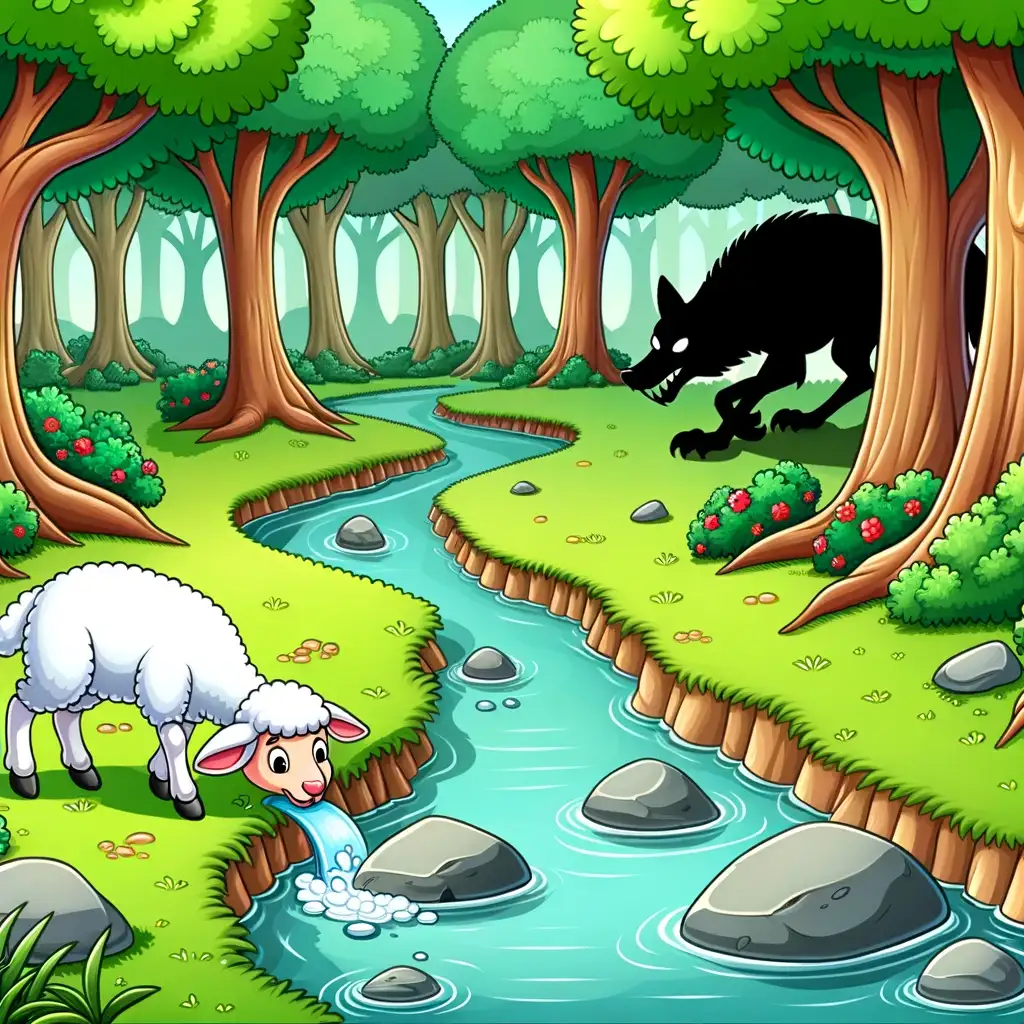
The Wolf and the Lamb – Aesop’s Fables
As dawn painted the sky, a young Lamb took a sip from a tranquil forest stream. Not far away, a Wolf, stomach rumbling with hunger, wandered in search of breakfast. Spotting the Lamb, he hesitated. While he normally wouldn’t think twice, he felt a strange need to justify his imminent act.
“You there! Why are you muddying my pristine stream?” he roared, feigning outrage. “Such thoughtlessness warrants punishment!”
The Lamb, voice quivering, replied, “Sir, I’m downstream. I can’t possibly disturb the water you’re drinking.”
Undeterred, the Wolf snapped, “Yet you have! And haven’t you spoken ill of me in the past?”
The innocent Lamb countered, “I was born this year. How could I?”
“It must’ve been a sibling, then!”
“I’m an only child.”
Growing irate, the Wolf declared, “Someone from your family did, and I won’t be denied my feast.”
Without further ado, he lunged, whisking the Lamb away into the forest’s depths.
Might often crafts its own justifications.
Those with ill intent seldom value innocence’s clarifications.
What principles and lessons can be learned from the above stories?
The tale of “The Cunning Wolf and the Innocent Lamb” offers a profound insight into the nature of power and its justifications. The Wolf, despite recognizing the Lamb’s purity, sought reasons to validate his hunger-driven intention. This narrative underscores how those in positions of strength or authority might sometimes twist truths or create excuses to serve their purposes. The Lamb, emblematic of innocence and truth, attempted to reason, only to be overpowered by the Wolf’s baseless arguments. This timeless tale stands as a reminder that it’s essential to discern the truth and stand firm in our convictions, especially when faced with those who’d twist narratives for personal gain.


